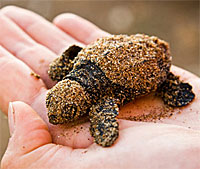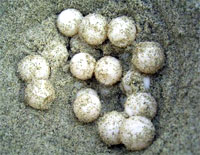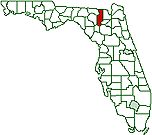 Love
is in the Air for Florida Sea Turtles
Love
is in the Air for Florida Sea Turtles
Posted August 8, 2012 10:15 am | Public News Service
ST. PETERSBURG, FL - It's a "baby boom" year for Florida sea turtles.
Around the state, wildlife experts are pleasantly surprised by the number of sea turtle nests popping up on beaches. Nest counts are 50 percent higher statewide.

Eggs stolen from a nest in Sarasota. Photo:
Nature's Crusaders
"We don't always know why they make decisions to
nest. Of course, one season does not a 'population'
make."
Witherington says some of the nesting could be
attributed to greater availability of food for the
turtles. When wildlife researchers find nests on the
beach, they rope them off so they're easily seen and ask
the public to leave them undisturbed. The nesting period
for sea turtles in Florida runs from March through
October.

Photo: Rebecca Wilson
Elizabeth Fleming, a Florida representative of
Defenders of Wildlife, says it's also important to
reduce artificial lighting in beach areas at night.
After they hatch, turtles instinctively go toward the
brightest light, which on natural beaches is the moon's
reflection on the water. Street lights can prompt
hatchlings and their mothers to go the wrong direction.
"Sea turtles get disoriented. The females, instead of
going back to the water, they will head up beyond the
dunes and sometimes into a parking lot - even they've
been run over in the street."
Florida is known to biologists as a sea turtle haven.
Witherington says 90 percent of nesting in the United
States takes place in the Sunshine State.
"The significance of Florida to the world's sea turtles
can't be overstated. Florida is very important. We are
the sea turtle state."
Loggerhead turtles make up most of the Florida
population, but the numbers of green and leatherback
turtles also are growing.
Photos added by the Observer
Photo in hand: the dailygreen.com
